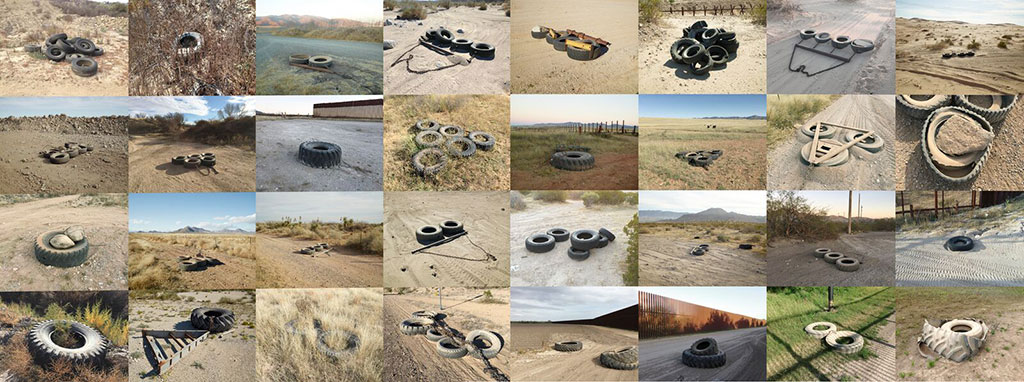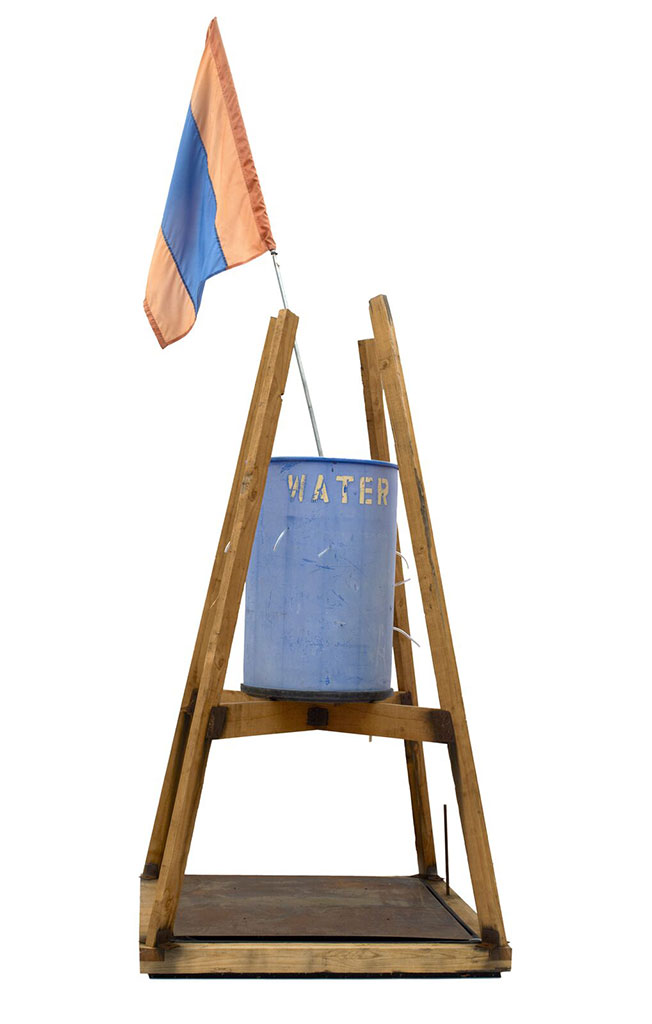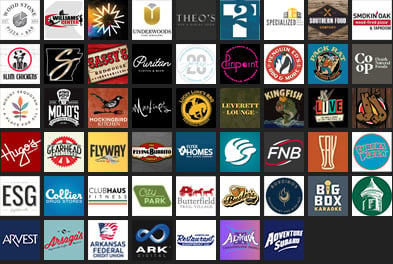
Richard Misrach – Playas de Tijuana #1, San Diego, California, 2013. Pigment print / Courtesy of the artist
The Mexican-American border is a beautiful place, a testament to the vastness of the desert and its unspoiled beauty. The Mexican-American border is also a tough place, a contentious place, littered with discarded clothing, bullet casings and dreams deferred. That same beautiful vastness of the border area makes it hard to regulate, and the unspoiled border area is sometimes used as a tool. U.S. border agents drag large tires through the sand at the border to create a pristine barrier. That way, if someone does cross the border, their unique shoeprints might be used to identify them later.

What: “Border Cantos: Sight & Sound Explorations from the Mexican-American Border”
When: Feb. 18 through April 24
Where: Crystal Bridges Museum of American Art, Bentonville
Cost: Free
Info: Call 479-418-5700 or visit crystalbridges.org
Exhibit Events
Here are a few “Border Cantos”-related events at the museum:
7 p.m. Feb. 17 – Opening lecture with exhibit co-creator Richard Misrach
1-2 p.m. Feb. 18 – Walkthrough with the artists
1-2 p.m. Feb. 23 – Concert by exhibit co-creator Guillermo Galindo
1-2 p.m. Mondays, Wednesday and Fridays – Guided tours of the exhibit
2-3 p.m. Sundays – Guided tours of the exhibit conducted in Spanish
Some of these special events require reservations and/or tickets. For details and pricing, visit crystalbridges.org.
These are all things to be learned inside the timely new exhibit “Border Cantos: Sight & Sound Explorations from the Mexican-American Border.” The exhibit, which opens to the public on Saturday at Crystal Bridges Museum of American Art in Bentonville, is a joint project of photographer Richard Misrach and sculptor and abstract artist Guillermo Galindo.
Considering the recent push for a full-length border wall from newly inaugurated U.S. President Donald Trump, the exhibit could not be more timely. Except it wasn’t planned that way. Misrach, all while on sojourns in his Volkswagen camper bus, has been taking photos of the Mexican-American border for more than a decade. He met Galindo in 2012 and they started work on their collaborative project shortly thereafter. The completed project has already been on display in two other locations – the San Jose Museum of Art and most recently at the Amon Carter Museum of American Art in Fort Worth, Texas.
“We worked on it [the border series] before it became a prime-time news event every night,” said Misrach, who like Galindo, attended a media preview at the museum on Thursday morning.
The artists both say their work is not an overt political statement. Instead, the exhibit attempts to document the complex realities of the border area. With a few exceptions, Misrach’s photos don’t show humans. Instead, they show discarded backpacks and tire tracks or steel pipes in one of the many miles of border area where a prohibitive barrier already exists – about 1/3 of the border’s approximately 2,000 miles already has a wall or fence of some kind. The first image he shot for the exhibit, years before he knew what the focus would be, is of a simple blue barrel labeled “agua.” These water dispensaries, Misrach said, were installed by Christian humanitarian groups in areas where border crossers were mostly likely to die from fatigue or dehydration. Misrach eventually met up with one of the groups who set up such water stops. He remembers talking to a man from the opposite side of the political spectrum.

Using objects found at the Mexican-American border, artist Guillermo Galindo has made a series of instruments that are on display as part of the new “Border Cantos” exhibit at Crystal Bridges. The strings affixed to this discarded jacket make it a playable instrument.
Photo: Kevin Kinder
“We didn’t agree on anything except that people shouldn’t be left to die out there,” he said.
But even that idea is called into question in one of the works. One of the retired blue barrels is now on display as part of “Border Cantos.” The barrel is no longer used because someone shot holes through it to make sure no one got the water.
Such artifacts are the realm of Galindo’s work. He assembled the porous bucket into a musical instrument, with water that flows into the bucket raining down on a resonate surface below. The piece is titled “Fountain of Tears.” He’s similarly made instruments out of dozens of found objects – shell casings from a border patrol target range, discarded clothing and an actual chunk of the wall. As Misrach took photos, he would send them to Galindo. As Galindo got ideas for instruments or sculptures, he would send Misrach out to the field to collect samples. These artifacts look like they come from a distant land, but with the global nature of the ongoing immigration debate, it feels local, too. For instance, an image of a humanoid effigy Misrach captured near the border shows the figure wearing a Tyson Foods ball cap.

Richard Misrach – Border Patrol Drag Grid, Pacific Ocean to the Gulf of Mexico, 2009-2015. Pigment print. / Courtesy of the artist.
“Border Cantos” is a noisy exhibit, both because of the vivid colors and from recordings of Galindo’s instruments. There are also tablets installed throughout the gallery to hear the instruments Galindo has made. It’s also expansive, with Misrach’s photos displayed in large format and Galindo’s sculptures taking up large chunks of real estate, some hanging from the ceiling.
Galindo’s favorite piece is one assembled from discarded cloth. On it, written in Braille, are the results of forensic investigations that plot out the locations and probable causes of death for border crossers who finished their journey sooner than they planned.
“We’re artists; we’re not politicians. We want to give people the experience of the border, and to get acquainted with the immigrants’ journey. To make it palpable. To make it human,” Galindo said in the guide to the exhibition.
Descriptions that accompany the works are written in both English and Spanish. There will also be a Spanish-language tour offered each Sunday during the run of the exhibition. As visitors exit “Border Cantos,” they enter an interactive station that allows them to share their origin stories on a large wall with post-it notes.
“Border Cantos” remains on view at Crystal Bridges through April 24.

Guillermo Galindo – Fountain of Tears, 2014. Wood, iron plate, water tank, nylon flag. / Courtesy



